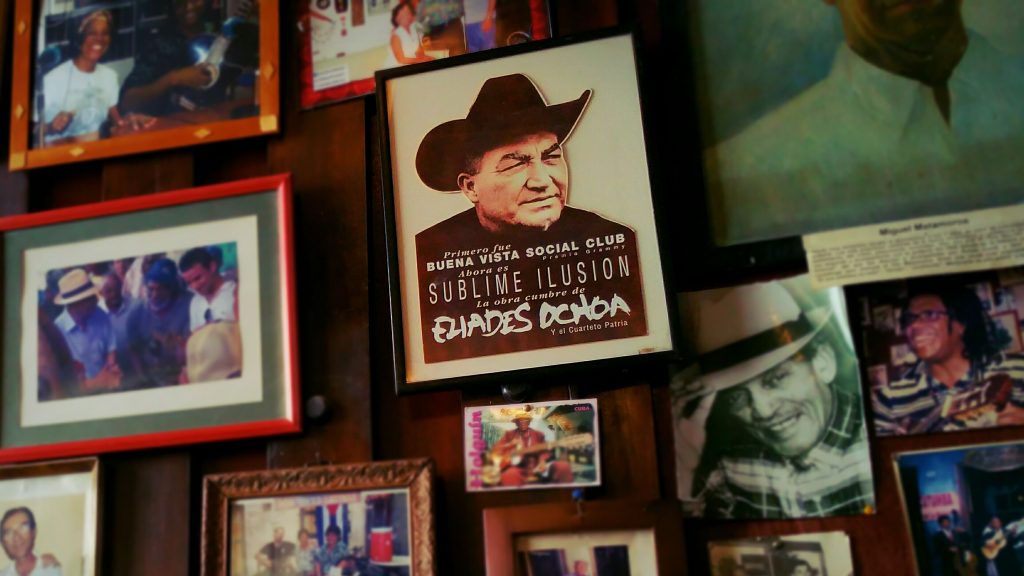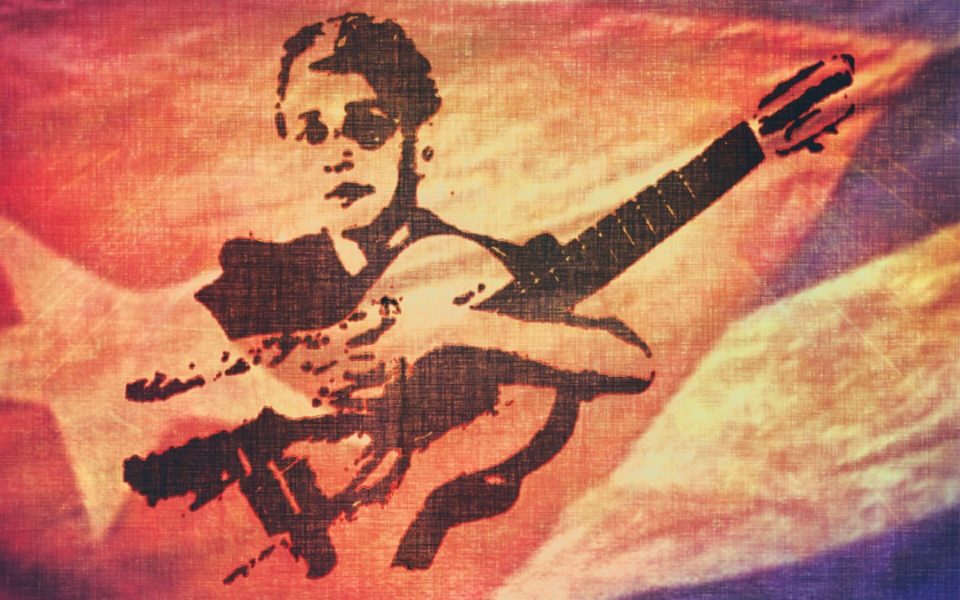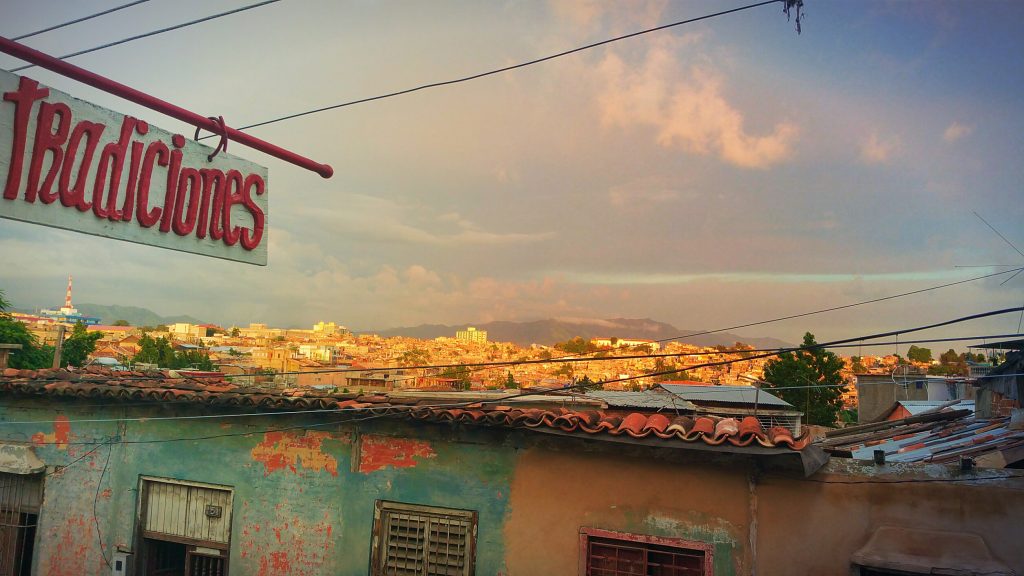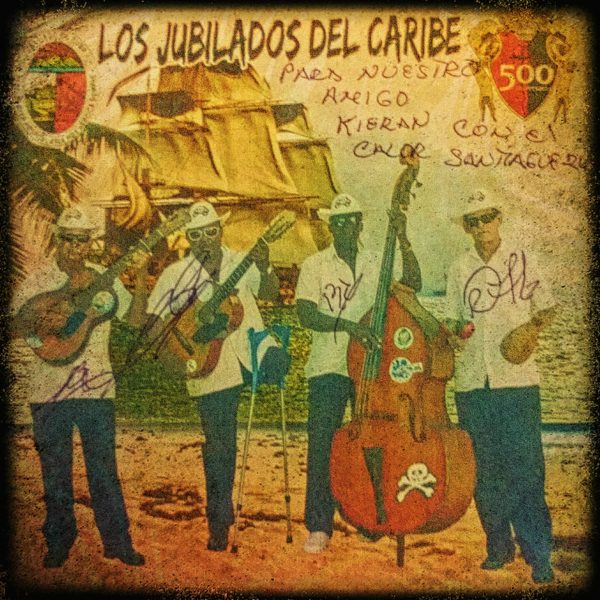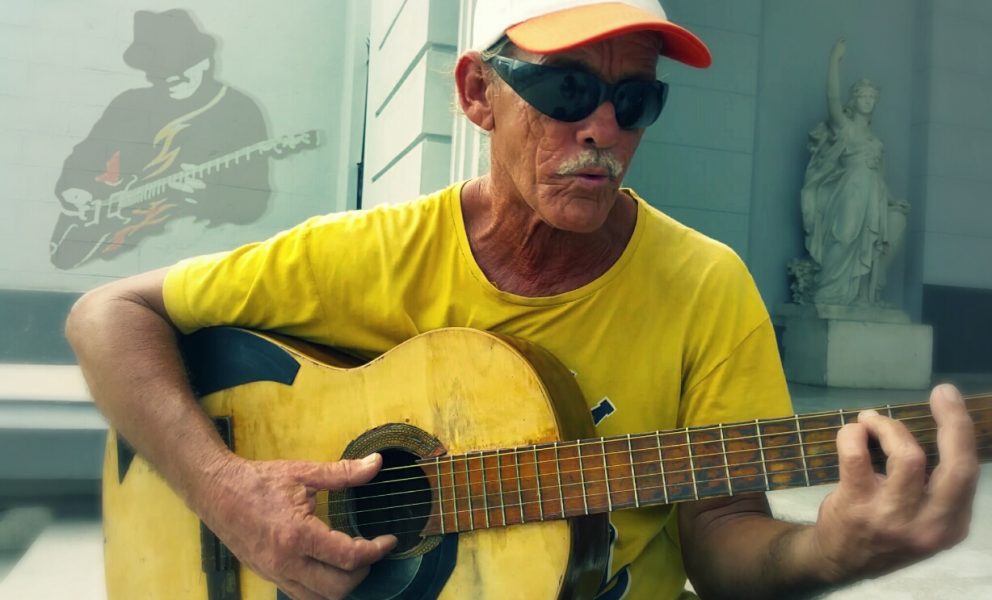School of Mariachi | Guadalajara
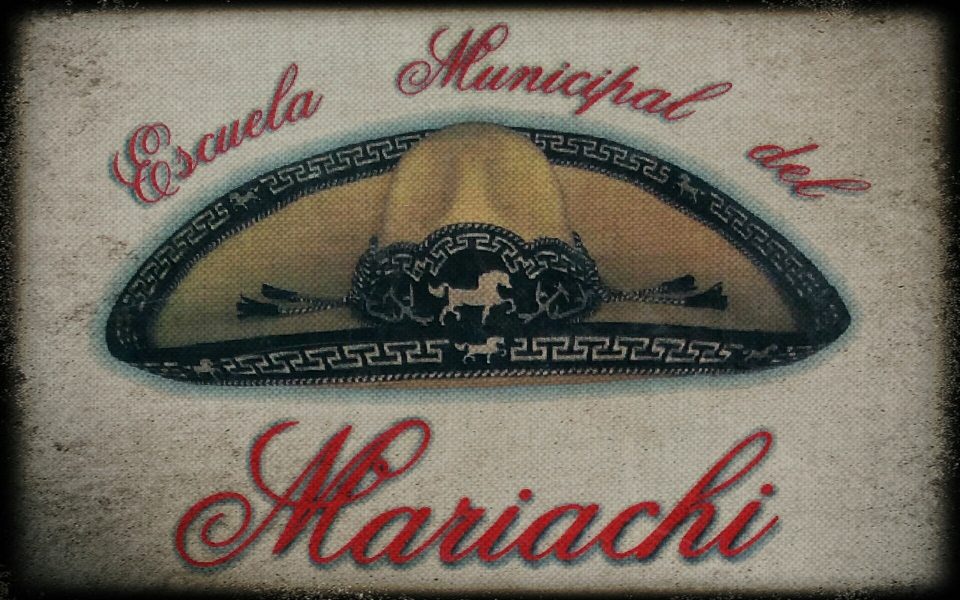
[vc_row][vc_column][vc_column_text]
I first met Fernando Briseño, Director of Guadalajara’s Escuela del Mariachi, at the Fiesta de la Música. He was there watching one of his teaching staff, Laura Iveth, perform with her mariachi group, Mariachi Las Morenas.
I saw him stood near to the sound engineer, dressed all in black, keeping a close eye on proceedings.
I decided to park myself opposite him, as near as I could to the vihuela and guitarrón players.
[/vc_column_text][vc_separator color=”green”][/vc_column][/vc_row][vc_row top_margin=”0″ bottom_margin=”0″ css=”.vc_custom_1471973953254{background-color: rgba(255,255,255,0.01) !important;*background-color: rgb(255,255,255) !important;}”][vc_column][vc_custom_heading text=”Mexican Guitar Mods” font_container=”tag:h1|text_align:center” google_fonts=”font_family:Lobster%3Aregular|font_style:400%20regular%3A400%3Anormal” css=”.vc_custom_1471970220248{margin-top: 0px !important;}”][vc_custom_heading text=”Made in Jalisco, Mexico” font_container=”tag:h2|text_align:center” google_fonts=”font_family:Lobster%3Aregular|font_style:400%20regular%3A400%3Anormal” css=”.vc_custom_1592868341955{margin-top: 0px !important;}”][vc_row_inner][vc_column_inner width=”1/2″][vc_custom_heading text=”The Vihuela” font_container=”tag:h2|text_align:center” google_fonts=”font_family:Lobster%3Aregular|font_style:400%20regular%3A400%3Anormal” css=”.vc_custom_1592869751365{margin-top: 0px !important;}”][vc_column_text]
A 5-stringed instrument similar to the guitar but smaller and with a vaulted back.
Along with the guitar, it provides the rhythmic support for the voice and melodic instruments (violin and trumpet).
The tuning is essentially the same as the 5 highest strings of the guitar but some are tuned an octave higher to help it cut through the mix.
[/vc_column_text][vc_raw_html]JTNDaWZyYW1lJTIwd2lkdGglM0QlMjIxMDAlMjUlMjIlMjBoZWlnaHQlM0QlMjIxNjYlMjIlMjBzY3JvbGxpbmclM0QlMjJubyUyMiUyMGZyYW1lYm9yZGVyJTNEJTIybm8lMjIlMjBhbGxvdyUzRCUyMmF1dG9wbGF5JTIyJTIwc3JjJTNEJTIyaHR0cHMlM0ElMkYlMkZ3LnNvdW5kY2xvdWQuY29tJTJGcGxheWVyJTJGJTNGdXJsJTNEaHR0cHMlMjUzQSUyRiUyRmFwaS5zb3VuZGNsb3VkLmNvbSUyRnRyYWNrcyUyRjI3OTUzNjc1MCUyNmNvbG9yJTNEJTI1MjNmZjU1MDAlMjZhdXRvX3BsYXklM0RmYWxzZSUyNmhpZGVfcmVsYXRlZCUzRGZhbHNlJTI2c2hvd19jb21tZW50cyUzRHRydWUlMjZzaG93X3VzZXIlM0R0cnVlJTI2c2hvd19yZXBvc3RzJTNEZmFsc2UlMjZzaG93X3RlYXNlciUzRHRydWUlMjIlM0UlM0MlMkZpZnJhbWUlM0UlM0NkaXYlMjBzdHlsZSUzRCUyMmZvbnQtc2l6ZSUzQSUyMDEwcHglM0IlMjBjb2xvciUzQSUyMCUyM2NjY2NjYyUzQmxpbmUtYnJlYWslM0ElMjBhbnl3aGVyZSUzQndvcmQtYnJlYWslM0ElMjBub3JtYWwlM0JvdmVyZmxvdyUzQSUyMGhpZGRlbiUzQndoaXRlLXNwYWNlJTNBJTIwbm93cmFwJTNCdGV4dC1vdmVyZmxvdyUzQSUyMGVsbGlwc2lzJTNCJTIwZm9udC1mYW1pbHklM0ElMjBJbnRlcnN0YXRlJTJDTHVjaWRhJTIwR3JhbmRlJTJDTHVjaWRhJTIwU2FucyUyMFVuaWNvZGUlMkNMdWNpZGElMjBTYW5zJTJDR2FydWRhJTJDVmVyZGFuYSUyQ1RhaG9tYSUyQ3NhbnMtc2VyaWYlM0Jmb250LXdlaWdodCUzQSUyMDEwMCUzQiUyMiUzRSUzQ2ElMjBocmVmJTNEJTIyaHR0cHMlM0ElMkYlMkZzb3VuZGNsb3VkLmNvbSUyRmtpZXJhbi1naWxjaHJpc3QlMjIlMjB0aXRsZSUzRCUyMk9wZW4lMjBTYXVjZSUyMEd1aXRhciUyMiUyMHRhcmdldCUzRCUyMl9ibGFuayUyMiUyMHN0eWxlJTNEJTIyY29sb3IlM0ElMjAlMjNjY2NjY2MlM0IlMjB0ZXh0LWRlY29yYXRpb24lM0ElMjBub25lJTNCJTIyJTNFT3BlbiUyMFNhdWNlJTIwR3VpdGFyJTNDJTJGYSUzRSUyMCVDMiVCNyUyMCUzQ2ElMjBocmVmJTNEJTIyaHR0cHMlM0ElMkYlMkZzb3VuZGNsb3VkLmNvbSUyRmtpZXJhbi1naWxjaHJpc3QlMkZtZXhpY2FuLXZpaHVlbGEtc2FtcGxlJTIyJTIwdGl0bGUlM0QlMjJNZXhpY2FuJTIwVmlodWVsYSUyMCUyOFNhbXBsZSUyOSUyMiUyMHRhcmdldCUzRCUyMl9ibGFuayUyMiUyMHN0eWxlJTNEJTIyY29sb3IlM0ElMjAlMjNjY2NjY2MlM0IlMjB0ZXh0LWRlY29yYXRpb24lM0ElMjBub25lJTNCJTIyJTNFTWV4aWNhbiUyMFZpaHVlbGElMjAlMjhTYW1wbGUlMjklM0MlMkZhJTNFJTNDJTJGZGl2JTNF[/vc_raw_html][/vc_column_inner][vc_column_inner width=”1/2″][vc_custom_heading text=”The Guitarrón” font_container=”tag:h2|text_align:center” google_fonts=”font_family:Lobster%3Aregular|font_style:400%20regular%3A400%3Anormal” css=”.vc_custom_1592869766012{margin-top: 0px !important;}”][vc_column_text]
The Guitarron Essentially a larger, fretless version of the vihuela with 6-strings. The depth of its body gives it acoustic power it needs to be heard.
It provides the bass role in the ensemble and has become increasingly more popular than the harp, which traditionally played that role.
It’s tuning is similar in concept to a 6-string bass but with its lowest string A matching the vihuela.
[/vc_column_text][vc_raw_html]JTNDaWZyYW1lJTIwd2lkdGglM0QlMjIxMDAlMjUlMjIlMjBoZWlnaHQlM0QlMjIxNjYlMjIlMjBzY3JvbGxpbmclM0QlMjJubyUyMiUyMGZyYW1lYm9yZGVyJTNEJTIybm8lMjIlMjBhbGxvdyUzRCUyMmF1dG9wbGF5JTIyJTIwc3JjJTNEJTIyaHR0cHMlM0ElMkYlMkZ3LnNvdW5kY2xvdWQuY29tJTJGcGxheWVyJTJGJTNGdXJsJTNEaHR0cHMlMjUzQSUyRiUyRmFwaS5zb3VuZGNsb3VkLmNvbSUyRnRyYWNrcyUyRjI3OTUzNjQzMiUyNmNvbG9yJTNEJTI1MjNmZjU1MDAlMjZhdXRvX3BsYXklM0RmYWxzZSUyNmhpZGVfcmVsYXRlZCUzRGZhbHNlJTI2c2hvd19jb21tZW50cyUzRHRydWUlMjZzaG93X3VzZXIlM0R0cnVlJTI2c2hvd19yZXBvc3RzJTNEZmFsc2UlMjZzaG93X3RlYXNlciUzRHRydWUlMjIlM0UlM0MlMkZpZnJhbWUlM0UlM0NkaXYlMjBzdHlsZSUzRCUyMmZvbnQtc2l6ZSUzQSUyMDEwcHglM0IlMjBjb2xvciUzQSUyMCUyM2NjY2NjYyUzQmxpbmUtYnJlYWslM0ElMjBhbnl3aGVyZSUzQndvcmQtYnJlYWslM0ElMjBub3JtYWwlM0JvdmVyZmxvdyUzQSUyMGhpZGRlbiUzQndoaXRlLXNwYWNlJTNBJTIwbm93cmFwJTNCdGV4dC1vdmVyZmxvdyUzQSUyMGVsbGlwc2lzJTNCJTIwZm9udC1mYW1pbHklM0ElMjBJbnRlcnN0YXRlJTJDTHVjaWRhJTIwR3JhbmRlJTJDTHVjaWRhJTIwU2FucyUyMFVuaWNvZGUlMkNMdWNpZGElMjBTYW5zJTJDR2FydWRhJTJDVmVyZGFuYSUyQ1RhaG9tYSUyQ3NhbnMtc2VyaWYlM0Jmb250LXdlaWdodCUzQSUyMDEwMCUzQiUyMiUzRSUzQ2ElMjBocmVmJTNEJTIyaHR0cHMlM0ElMkYlMkZzb3VuZGNsb3VkLmNvbSUyRmtpZXJhbi1naWxjaHJpc3QlMjIlMjB0aXRsZSUzRCUyMk9wZW4lMjBTYXVjZSUyMEd1aXRhciUyMiUyMHRhcmdldCUzRCUyMl9ibGFuayUyMiUyMHN0eWxlJTNEJTIyY29sb3IlM0ElMjAlMjNjY2NjY2MlM0IlMjB0ZXh0LWRlY29yYXRpb24lM0ElMjBub25lJTNCJTIyJTNFT3BlbiUyMFNhdWNlJTIwR3VpdGFyJTNDJTJGYSUzRSUyMCVDMiVCNyUyMCUzQ2ElMjBocmVmJTNEJTIyaHR0cHMlM0ElMkYlMkZzb3VuZGNsb3VkLmNvbSUyRmtpZXJhbi1naWxjaHJpc3QlMkZtZXhpY2FuLWd1aXRhcnJvbi1zYW1wbGUlMjIlMjB0aXRsZSUzRCUyMk1leGljYW4lMjBHdWl0YXJyJUMzJUIzbiUyMCUyOFNhbXBsZSUyOSUyMiUyMHRhcmdldCUzRCUyMl9ibGFuayUyMiUyMHN0eWxlJTNEJTIyY29sb3IlM0ElMjAlMjNjY2NjY2MlM0IlMjB0ZXh0LWRlY29yYXRpb24lM0ElMjBub25lJTNCJTIyJTNFTWV4aWNhbiUyMEd1aXRhcnIlQzMlQjNuJTIwJTI4U2FtcGxlJTI5JTNDJTJGYSUzRSUzQyUyRmRpdiUzRQ==[/vc_raw_html][/vc_column_inner][/vc_row_inner][vc_separator color=”green”][/vc_column][/vc_row][vc_row][vc_column][vc_custom_heading text=”The Ranchera Genre” font_container=”tag:h1|text_align:center” google_fonts=”font_family:Lobster%3Aregular|font_style:400%20regular%3A400%3Anormal” css=”.vc_custom_1480196986687{margin-top: 0px !important;}”][vc_custom_heading text=”Polkas, Waltzes and Slow Burners” font_container=”tag:h2|text_align:center” google_fonts=”font_family:Lobster%3Aregular|font_style:400%20regular%3A400%3Anormal” css=”.vc_custom_1592868358662{margin-top: 0px !important;}”][vc_column_text]
Midway through the show, Laura takes the vocal lead for a fast-paced ranchera with a polka rhythm.
Here she is singing ‘Áca Entre Nos‘ (‘Here Between Us‘), with Fernando Briseño in the background, left of centre.
[/vc_column_text][vc_empty_space][vc_video link=”https://youtu.be/N3iLHmQGgrc” align=”center”][/vc_column][/vc_row][vc_row top_margin=”0″ bottom_margin=”0″ css=”.vc_custom_1480204308388{padding-bottom: 8px !important;background-color: rgba(0,0,0,0.18) !important;*background-color: rgb(0,0,0) !important;border-radius: 10px !important;}” el_id=”ranchera-interactive-notation”][vc_column][vc_empty_space height=”8px”][vc_custom_heading text=”Ranchera’s Rhythmic Varieties” font_container=”tag:h1|text_align:center” google_fonts=”font_family:Lobster%3Aregular|font_style:400%20regular%3A400%3Anormal” css=”.vc_custom_1592868946937{margin-top: 0px !important;}”][vc_column_text]
The ranchera genre has 3 main variations based on 2-, 3- and 4-beat patterns. The tempo tends to become slower as the number of beats in the basic pattern increases.
The plucked bass note of the guitarron comes first, then the guitar and vihuela strum after it.
[/vc_column_text][vc_custom_heading text=”The Basic Rhythmic Patterns” font_container=”tag:h2|text_align:center” google_fonts=”font_family:Lobster%3Aregular|font_style:400%20regular%3A400%3Anormal” css=”.vc_custom_1592868960918{margin-top: 0px !important;}”][vc_column_text]
Click on the icons to open the interactive notation and hit play…
[/vc_column_text][vc_raw_html]JTNDaWZyYW1lJTIwc3JjJTNEJTIyaHR0cHMlM0ElMkYlMkZ3d3cuc291bmRzbGljZS5jb20lMkZzbGljZXMlMkZqM0pOYyUyRmVtYmVkJTJGJTIyJTIwd2lkdGglM0QlMjIxMDAlMjUlMjIlMjBoZWlnaHQlM0QlMjI1MDAlMjIlMjBmcmFtZUJvcmRlciUzRCUyMjAlMjIlMjBhbGxvd2Z1bGxzY3JlZW4lM0UlM0MlMkZpZnJhbWUlM0U=[/vc_raw_html][vc_raw_html]JTNDaWZyYW1lJTIwc3JjJTNEJTIyaHR0cHMlM0ElMkYlMkZ3d3cuc291bmRzbGljZS5jb20lMkZzbGljZXMlMkZMM0pOYyUyRmVtYmVkJTJGJTIyJTIwd2lkdGglM0QlMjIxMDAlMjUlMjIlMjBoZWlnaHQlM0QlMjI1MDAlMjIlMjBmcmFtZUJvcmRlciUzRCUyMjAlMjIlMjBhbGxvd2Z1bGxzY3JlZW4lM0UlM0MlMkZpZnJhbWUlM0U=[/vc_raw_html][vc_raw_html]JTNDaWZyYW1lJTIwc3JjJTNEJTIyaHR0cHMlM0ElMkYlMkZ3d3cuc291bmRzbGljZS5jb20lMkZzbGljZXMlMkZaM0pOYyUyRmVtYmVkJTJGJTIyJTIwd2lkdGglM0QlMjIxMDAlMjUlMjIlMjBoZWlnaHQlM0QlMjI1MDAlMjIlMjBmcmFtZUJvcmRlciUzRCUyMjAlMjIlMjBhbGxvd2Z1bGxzY3JlZW4lM0UlM0MlMkZpZnJhbWUlM0U=[/vc_raw_html][vc_column_text]
Las Morenas played ‘Acá Entre Nos‘ as a polka here, but it can also be played as a slow ranchera lenta, as Vicente Fernández does here.
[/vc_column_text][/vc_column][/vc_row][vc_row][vc_column][/vc_column][/vc_row][vc_row][vc_column][vc_column_text]
After this song, the heat is turned up a bit. The vihuela player nearest to me starts knocking out some crazy rhythms, whilst maintaining an expression of perfect serenity. In all the countries I have visited, never have I seen women play the guitar like they do in Mexico.
I was watching wondering: what on earth is she doing? So I decided to take the opportunity to have a chat with her afterwards to see if she may be available for lessons.
Unfortunately, she wasn’t but I did manage to strike up a conversation with Fernando. He told me that his school, Escuela del Mariachi, gives free lessons to the community. He then offered me his card and kindly invited me to drop by one day.
[/vc_column_text][vc_separator color=”green”][/vc_column][/vc_row][vc_row][vc_column][vc_custom_heading text=”La Escuela del Mariachi” font_container=”tag:h1|text_align:center” google_fonts=”font_family:Lobster%3Aregular|font_style:400%20regular%3A400%3Anormal” css=”.vc_custom_1472568757732{margin-top: 0px !important;}”][vc_custom_heading text=”Where the Next Generation of Mariachis is Made” font_container=”tag:h2|text_align:center” google_fonts=”font_family:Lobster%3Aregular|font_style:400%20regular%3A400%3Anormal” css=”.vc_custom_1592868495434{margin-top: 0px !important;}”][vc_column_text]
The building is a modest structure, incognito, almost undercover. If it wasn’t for the fused sound of instrumental riffing pouring out of the door, you’d never know it was there. I stepped through into what seemed like an open warehouse.
[/vc_column_text][vc_single_image image=”3166″ img_size=”full”][vc_column_text]
There are five practice rooms catering for each instrument in the mariachi ensemble, vocals and music theory:
[/vc_column_text][vc_media_grid element_width=”2″ gap=”10″ item=”mediaGrid_FadeInWithIcon” initial_loading_animation=”none” grid_id=”vc_gid:1592870757663-9867eb0d-891d-7″ include=”3189,3191,3268,3190,3192″][vc_column_text]
I spot Fernando sitting at his desk so I walk on over. He greets me with a smile and a handshake.
With pride of place, hanging directly behind him, is an old black and white picture of the iconic mariachi band, Mariachi Vargas de Tecalitlán.
[/vc_column_text][vc_separator color=”green”][/vc_column][/vc_row][vc_row][vc_column][vc_custom_heading text=”Fernando Briseño Gonzalez” font_container=”tag:h1|text_align:center” google_fonts=”font_family:Lobster%3Aregular|font_style:400%20regular%3A400%3Anormal” css=”.vc_custom_1472270227709{margin-top: 0px !important;}”][vc_custom_heading text=”The Son of a Mariachero” font_container=”tag:h2|text_align:center” google_fonts=”font_family:Lobster%3Aregular|font_style:400%20regular%3A400%3Anormal” css=”.vc_custom_1592868622606{margin-top: 0px !important;}”][vc_row_inner][vc_column_inner][vc_column_text]
Fernando is the son of a distinguished mariachi, Lino Briseño, who was a guitarist in the mariachi group Mariachi Vargas de Tecalitlán for 10 years.
Mariachi Vargas was established in 1898 and is now in its 6th generation. They are renowned, both at home and internationally, for their high-quality blend of mariachi music and their professionalism.
They began as a quartet, with Gaspar Vargas, and later his son, Silvestre, as director. Eventually, they moved to Mexico City and expanded into a larger ensemble.
[/vc_column_text][vc_single_image image=”3250″ img_size=”full” add_caption=”yes” alignment=”center” style=”vc_box_shadow_border” onclick=”link_image”][/vc_column_inner][/vc_row_inner][vc_row_inner css=”.vc_custom_1471975204822{background-color: rgba(0,0,0,0.13) !important;*background-color: rgb(0,0,0) !important;}”][vc_column_inner][vc_custom_heading text=”Lino’s Entry into Mariachi Vargas” font_container=”tag:h2|text_align:center” google_fonts=”font_family:Lobster%3Aregular|font_style:400%20regular%3A400%3Anormal” css=”.vc_custom_1592868609101{margin-top: 0px !important;}”][vc_column_text]
It was in Mexico City that Silvestre happened upon Lino singing ‘Son de la Negra‘ and playing the guitarron with his mariachi quartet in Plaza Garibaldi. Silvestre was so struck by his soaring vocals that he approached him and asked him to play guitar for Mariachi Vargas.
Lino didn’t recognise Silvestre at first but his bandmates were quick to tell him who he was. He couldn’t believe that Silvestre would choose him, but also pointed out that he was a guitarron player.
Silvestre assured him that he would teach him to play guitar. He invited him back to his house, took down a guitar from his wall, wiped the dust off and gave it to him.
Here are Mariachi Vargas performing ‘Son de la Negra‘ in France, with Lino on guitar (he’s the guitarist on the right who appears close-up on 0:48 and takes centre stage to sing).
[/vc_column_text][vc_raw_html]JTNDaWZyYW1lJTIwc3JjJTNEJTIyaHR0cHMlM0ElMkYlMkZ3d3cuZmFjZWJvb2suY29tJTJGcGx1Z2lucyUyRnZpZGVvLnBocCUzRmhyZWYlM0RodHRwcyUyNTNBJTI1MkYlMjUyRnd3dy5mYWNlYm9vay5jb20lMjUyRk1hcmlhY2hpdmFyZ2Fzb2ZpY2lhbCUyNTJGdmlkZW9zJTI1MkYxMjE5NzA0MzAxMzgxODExJTI1MkYlMjZzaG93X3RleHQlM0QwJTI2d2lkdGglM0Q1NjAlMjIlMjB3aWR0aCUzRCUyMjgwMCUyMiUyMGhlaWdodCUzRCUyMjQ1MCUyMiUyMHN0eWxlJTNEJTIyYm9yZGVyJTNBbm9uZSUzQm92ZXJmbG93JTNBaGlkZGVuJTIyJTIwc2Nyb2xsaW5nJTNEJTIybm8lMjIlMjBmcmFtZWJvcmRlciUzRCUyMjAlMjIlMjBhbGxvd1RyYW5zcGFyZW5jeSUzRCUyMnRydWUlMjIlMjBhbGxvd0Z1bGxTY3JlZW4lM0QlMjJ0cnVlJTIyJTNFJTNDJTJGaWZyYW1lJTNF[/vc_raw_html][vc_column_text]
The classically-trained Ruben Fuentes had joined the group a few years earlier. He was heavily involved in re-arranging and modernising the traditional mariachi repertoire, which helped catapult the group into the Mexican film, radio and recording industries.
[/vc_column_text][vc_custom_heading text=”Mariachi Vargas & The Golden Age of Mexican Film (1936-1959)” font_container=”tag:h2|text_align:center” google_fonts=”font_family:Lobster%3Aregular|font_style:400%20regular%3A400%3Anormal” css=”.vc_custom_1592868640632{margin-top: 0px !important;}”][/vc_column_inner][vc_column_inner width=”1/2″][vc_column_text]
In 1937, Mariachi Vargas appeared in their first film, ‘Asi Es Mi Tierra‘ (‘This Is My Land’)
They would go on to star in more than 200 films with the most famous actors of the age, such as Pedro Infante.
That same year, they recorded their first record and signed an exclusive contract with RCA.
[/vc_column_text][/vc_column_inner][vc_column_inner width=”1/2″][vc_single_image image=”3179″ img_size=”full” add_caption=”yes” alignment=”center” style=”vc_box_shadow_border” onclick=”link_image”][/vc_column_inner][vc_column_inner][vc_empty_space height=”1px”][vc_column_text]
They have now made over 100 CDs including original material, as well as arrangements of the traditional mariachi repertoire that have set the standard for mariachi music.
They regularly tour throughout Latin America and internationally.
[/vc_column_text][/vc_column_inner][/vc_row_inner][/vc_column][/vc_row][vc_row][vc_column][vc_empty_space][vc_column_text]
Fernando Briseño is steeped in the history and the finer details of mariachi music and culture. This, combined with his multi-instrumental knowledge and inclusive leadership style, surely makes him one of the best mentors that an aspiring mariachi could wish for.
[/vc_column_text][vc_media_grid gap=”10″ grid_id=”vc_gid:1592870757665-a5cf3e60-9c66-10″ include=”3253,3252,3251″][vc_separator color=”green”][/vc_column][/vc_row][vc_row][vc_column][vc_column_text][vc_custom_heading text=”Sitting in on a Practice Session” font_container=”tag:h1|text_align:center” google_fonts=”font_family:Lobster%3Aregular|font_style:400%20regular%3A400%3Anormal” css=”.vc_custom_1471976231330{margin-top: 0px !important;}”][vc_column_text]
All the students and teachers had gathered into one room to practice for an outdoor performance the following day. Fernando invited me to sit in and observe.
After they had practiced a few songs, he invited me to get my guitar out and play along if I can follow the chord progressions. After a couple of songs, I started to get a feel for it. He invited me to join the group of vihuela and guitar players of the other side of the room.
I kept an eye on one of the more experienced guitarists and managed to follow the majority of the repertoire. But naturally there were some changes which were quite unpredictable, so I dropped out for the odd bar here and there.
[/vc_column_text][vc_custom_heading text=”An Unexpected Invitation” font_container=”tag:h2|text_align:center” google_fonts=”font_family:Lobster%3Aregular|font_style:400%20regular%3A400%3Anormal” css=”.vc_custom_1592868766242{margin-top: 0px !important;}”][vc_column_text]
Once the session was over, Fernando took me very much by surprise and invited me to play with the group at the performance. And, given that it was my birthday that day, it was a great gift, from someone who didn’t even know.
He passed me a bow tie and a waistcoat, told me to get some black trousers and a white shirt, and return the next day ready to perform with the Escuela del Mariachi…
[/vc_column_text][vc_separator color=”green”][/vc_column][/vc_row][vc_row content_placement=”middle”][vc_column][vc_raw_js]JTNDZGl2JTIwY2xhc3MlM0QlMjJmYi1wYWdlJTIyJTIwZGF0YS1ocmVmJTNEJTIyaHR0cHMlM0ElMkYlMkZ3d3cuZmFjZWJvb2suY29tJTJGT3BlblNhdWNlR3VpdGFyJTIyJTIwZGF0YS1zbWFsbC1oZWFkZXIlM0QlMjJmYWxzZSUyMiUyMGRhdGEtYWRhcHQtY29udGFpbmVyLXdpZHRoJTNEJTIydHJ1ZSUyMiUyMGRhdGEtaGlkZS1jb3ZlciUzRCUyMmZhbHNlJTIyJTIwZGF0YS1zaG93LWZhY2VwaWxlJTNEJTIyZmFsc2UlMjIlM0UlM0NkaXYlMjBjbGFzcyUzRCUyMmZiLXhmYm1sLXBhcnNlLWlnbm9yZSUyMiUzRSUzQ2Jsb2NrcXVvdGUlMjBjaXRlJTNEJTIyaHR0cHMlM0ElMkYlMkZ3d3cuZmFjZWJvb2suY29tJTJGT3BlblNhdWNlR3VpdGFyJTIyJTNFJTNDYSUyMGhyZWYlM0QlMjJodHRwcyUzQSUyRiUyRnd3dy5mYWNlYm9vay5jb20lMkZPcGVuU2F1Y2VHdWl0YXIlMjIlM0VPcGVuJTIwU2F1Y2UlMjBHdWl0YXIlM0MlMkZhJTNFJTNDJTJGYmxvY2txdW90ZSUzRSUzQyUyRmRpdiUzRSUzQyUyRmRpdiUzRQ==[/vc_raw_js][vc_raw_js]JTNDZGl2JTIwaWQlM0QlMjJmYi1yb290JTIyJTNFJTNDJTJGZGl2JTNFJTBBJTNDc2NyaXB0JTNFJTI4ZnVuY3Rpb24lMjhkJTJDJTIwcyUyQyUyMGlkJTI5JTIwJTdCJTBBJTIwJTIwdmFyJTIwanMlMkMlMjBmanMlMjAlM0QlMjBkLmdldEVsZW1lbnRzQnlUYWdOYW1lJTI4cyUyOSU1QjAlNUQlM0IlMEElMjAlMjBpZiUyMCUyOGQuZ2V0RWxlbWVudEJ5SWQlMjhpZCUyOSUyOSUyMHJldHVybiUzQiUwQSUyMCUyMGpzJTIwJTNEJTIwZC5jcmVhdGVFbGVtZW50JTI4cyUyOSUzQiUyMGpzLmlkJTIwJTNEJTIwaWQlM0IlMEElMjAlMjBqcy5zcmMlMjAlM0QlMjAlMjIlMkYlMkZjb25uZWN0LmZhY2Vib29rLm5ldCUyRmVuX0dCJTJGc2RrLmpzJTIzeGZibWwlM0QxJTI2dmVyc2lvbiUzRHYyLjUlMjZhcHBJZCUzRDE3MDEyMDIwNTAxMjUwMTUlMjIlM0IlMEElMjAlMjBmanMucGFyZW50Tm9kZS5pbnNlcnRCZWZvcmUlMjhqcyUyQyUyMGZqcyUyOSUzQiUwQSU3RCUyOGRvY3VtZW50JTJDJTIwJTI3c2NyaXB0JTI3JTJDJTIwJTI3ZmFjZWJvb2stanNzZGslMjclMjklMjklM0IlM0MlMkZzY3JpcHQlM0U=[/vc_raw_js][/vc_column][/vc_row]

